Related Research Articles

A laser is a device that emits light through a process of optical amplification based on the stimulated emission of electromagnetic radiation. The word "laser" is an acronym for "light amplification by stimulated emission of radiation". The first laser was built in 1960 by Theodore H. Maiman at Hughes Research Laboratories, based on theoretical work by Charles Hard Townes and Arthur Leonard Schawlow.

A crystal oscillator is an electronic oscillator circuit that uses the mechanical resonance of a vibrating crystal of piezoelectric material to create an electrical signal with a constant frequency. This frequency is often used to keep track of time, as in quartz wristwatches, to provide a stable clock signal for digital integrated circuits, and to stabilize frequencies for radio transmitters and receivers. The most common type of piezoelectric resonator used is a quartz crystal, so oscillator circuits incorporating them became known as crystal oscillators. However, other piezoelectric materials including polycrystalline ceramics are used in similar circuits.

The vibraphone is a musical instrument in the struck idiophone subfamily of the percussion family. It consists of tuned metal bars and is usually played by holding two or four soft mallets and striking the bars. A person who plays the vibraphone is called a vibraphonist,vibraharpist, or vibist.
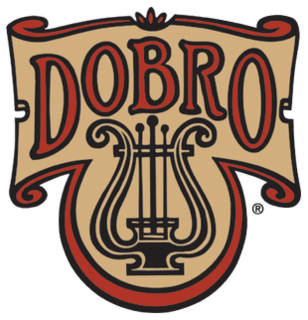
Dobro is an American brand of resonator guitars, currently owned by Gibson and manufactured by its subsidiary Epiphone. The term "dobro" is also used as a generic term for any wood-bodied, single-cone resonator guitar.
Hornbostel–Sachs or Sachs–Hornbostel is a system of musical instrument classification devised by Erich Moritz von Hornbostel and Curt Sachs, and first published in the Zeitschrift für Ethnologie in 1914. An English translation was published in the Galpin Society Journal in 1961. It is the most widely used system for classifying musical instruments by ethnomusicologists and organologists. The system was updated in 2011 as part of the work of the Musical Instrument Museums Online (MIMO) Project.

A klystron is a specialized linear-beam vacuum tube, invented in 1937 by American electrical engineers Russell and Sigurd Varian, which is used as an amplifier for high radio frequencies, from UHF up into the microwave range. Low-power klystrons are used as oscillators in terrestrial microwave relay communications links, while high-power klystrons are used as output tubes in UHF television transmitters, satellite communication, radar transmitters, and to generate the drive power for modern particle accelerators.

A resonator is a device or system that exhibits resonance or resonant behavior. That is, it naturally oscillates with greater amplitude at some frequencies, called resonant frequencies, than at other frequencies. The oscillations in a resonator can be either electromagnetic or mechanical. Resonators are used to either generate waves of specific frequencies or to select specific frequencies from a signal. Musical instruments use acoustic resonators that produce sound waves of specific tones. Another example is quartz crystals used in electronic devices such as radio transmitters and quartz watches to produce oscillations of very precise frequency.

An optical cavity, resonating cavity or optical resonator is an arrangement of mirrors that forms a standing wave cavity resonator for light waves. Optical cavities are a major component of lasers, surrounding the gain medium and providing feedback of the laser light. They are also used in optical parametric oscillators and some interferometers. Light confined in the cavity reflects multiple times, producing standing waves for certain resonance frequencies. The standing wave patterns produced are called modes; longitudinal modes differ only in frequency while transverse modes differ for different frequencies and have different intensity patterns across the cross-section of the beam.
A vibrating structure gyroscope, defined by the IEEE as a Coriolis vibratory gyroscope (CVG), is a gyroscope that uses a vibrating structure to determine the rate of rotation. A vibrating structure gyroscope functions much like the halteres of flies.

An ion laser is a gas laser that uses an ionized gas as its lasing medium. Like other gas lasers, ion lasers feature a sealed cavity containing the laser medium and mirrors forming a Fabry–Pérot resonator. Unlike helium–neon lasers, the energy level transitions that contribute to laser action come from ions. Because of the large amount of energy required to excite the ionic transitions used in ion lasers, the required current is much greater, and as a result all but the smallest ion lasers are water-cooled. A small air-cooled ion laser might produce, for example, 130 milliwatts of output light with a tube current of about 10 amperes and a voltage of 105 volts. Since one ampere times one volt is one watt, this is an electrical power input of about one kilowatt. Subtracting the (desirable) light output of 130 mW from power input, this leaves the large amount of waste heat of nearly one kW. This has to be dissipated by the cooling system. In other words, the power efficiency is very low.
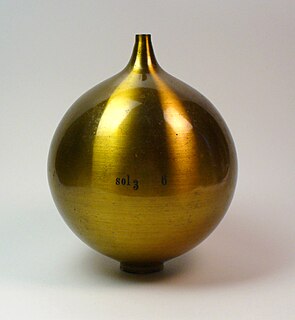
Helmholtz resonance or wind throb is the phenomenon of air resonance in a cavity, such as when one blows across the top of an empty bottle. The name comes from a device created in the 1850s by Hermann von Helmholtz, the Helmholtz resonator, which he used to identify the various frequencies or musical pitches present in music and other complex sounds.
A chemical laser is a laser that obtains its energy from a chemical reaction. Chemical lasers can reach continuous wave output with power reaching to megawatt levels. They are used in industry for cutting and drilling.
A thin-film bulk acoustic resonator is a device consisting of a piezoelectric material manufactured by thin film methods between two conductive - typically metallic - electrodes and acoustically isolated from the surrounding medium. The operation is based on the piezoelectricity of the piezolayer between the electrodes.
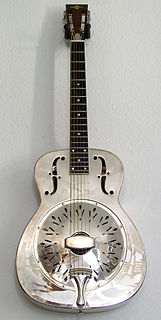
A resonator guitar or resophonic guitar is an acoustic guitar that produces sound by conducting string vibrations through the bridge to one or more spun metal cones (resonators), instead of to the guitar's sounding board (top). Resonator guitars were originally designed to be louder than regular acoustic guitars, which were overwhelmed by horns and percussion instruments in dance orchestras. They became prized for their distinctive tone, however, and found life with bluegrass music and the blues well after electric amplification solved the problem of inadequate volume.
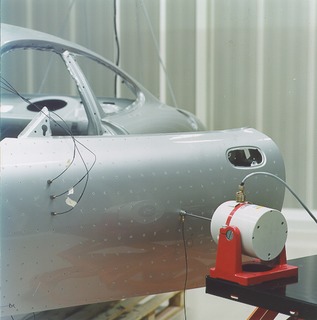
Modal analysis is the study of the dynamic properties of systems in the frequency domain. Examples would include measuring the vibration of a car's body when it is attached to a shaker, or the noise pattern in a room when excited by a loudspeaker.
Dielectric wireless receiver is a type of radiofrequency receiver front-end featuring a complete absence of electronic circuitry and metal interconnects. It offers immunity against damage from intense electromagnetic radiation, produced by EMP and HPM sources. This receiver is known as ADNERF. ADNERF is a type of Electro-Magnetic Pulse Tolerant Microwave Receiver (EMPiRe).
Jamestown C. McKinney, a renowned vocal pedagogue and longtime professor of voice at Southwestern Baptist Theological Seminary's school of church music, defines vocal resonance as "the process by which the basic product of phonation is enhanced in timbre and/or intensity by the air-filled cavities through which it passes on its way to the outside air." Throughout the vocal literature, various terms related to resonation are used, including: amplification, filtering, enrichment, enlargement, improvement, intensification, and prolongation. Acoustic authorities would question many of these terms from a strictly scientific perspective. However, the main point to be drawn from these terms by a singer or speaker is that the result of resonation is to make a "better" sound, or at least suitable to a certain esthetical and practical domain.

A resonator mandolin or "resophonic mandolin" is a mandolin whose sound is produced by one or more metal cones (resonators) instead of the customary wooden soundboard. These instruments are sometimes referred to as "Dobro mandolins," after pioneering instruments designed and produced by the Dopyera Brothers, which evolved into a brand name. The trademark "Dobro" is currently the property of the Gibson Guitar Corporation. When Gibson acquired the trademark in 1993, they announced that they would defend their right to its exclusive use.
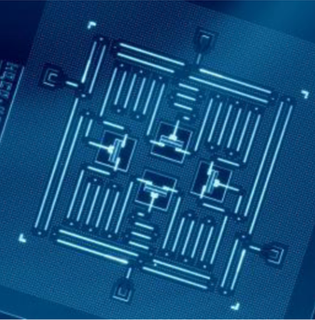
In quantum computing, and more specifically in superconducting quantum computing, a transmon is a type of superconducting charge qubit that was designed to have reduced sensitivity to charge noise. The transmon was developed by Robert J. Schoelkopf, Michel Devoret, Steven M. Girvin and their colleagues at Yale University in 2007. Its name is an abbreviation of the term transmission line shunted plasma oscillation qubit; one which consists of a Cooper-pair box "where the two superconductors are also capacitatively shunted in order to decrease the sensitivity to charge noise, while maintaining a sufficient anharmonicity for selective qubit control".
References
- ↑ "Basic principles of exciter-technology" (PDF). www.visaton.de. Retrieved 2020-03-07.
- ↑ "ListenTree". listentree.media.mit.edu.